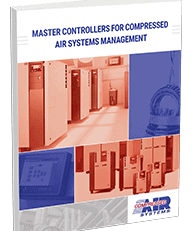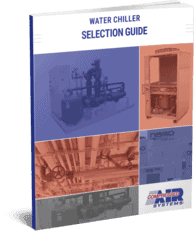What Class of Air Do You Need for Your Application?

Different applications require different compressed air quality levels to deliver optimal safety and efficiency. The International Organization for Standardization (ISO) maintains a set of guidelines called ISO 8573 that define the classes of compressed air quality based on specific testing criteria. Any application that requires compressed air should abide by the ISO 8573 standards to ensure that the air quality meets industry standards and provides the expected results.
ISO Air Quality Classes
The ISO classifies compressed air quality under ISO 8573 and provides standard criteria for testing air contaminants, including solid particles, oil, and water. While the ISO does not classify gasses and other pollutants like microbiological contaminants and volatile organic compounds, it does include methods for measuring such pollutants. The ISO standards are periodically updated to keep up with fast-changing industries, and its most recent update was ISO 8573:21:2010.
The ISO classifications help different industries classify the air requirements of their facilities and allow users to work to achieve the appropriate compressed air levels for their needs. The ISO provides the following test standards:
- ISO 8573-1: Classes of purity and contaminants
- ISO 8573-2: Testing for oil aerosol
- ISO 8573-3: Testing for humidity
- ISO 8573-4: Testing for solid particles
- ISO 8573-5: Testing for oil vapor
- ISO 8573-6: Testing for gas
- ISO 8573-7: Testing for viable microbiological content
- ISO 8573-8: Testing for solid particles with mass concentration
- ISO 8573-9: Testing for liquid water
Reading the ISO Classes Chart
ISO 8573 defines several air purity classes identified by three-digits, such as 1.1.1, 1.2.1, or -.8.-. The digits are read from left to right, with the first digit representing solids particles, the second water, and the third oil. A low number marks air with few contaminants, while a high number will mark highly-polluted air.
Air with an ISO classification of 1.1.1 or 1.2.1 has low levels of contamination. Sensitive applications like pharmaceutical and chemical processing depend on air with very low contaminant levels. A rating of -.8.- has no solid particulate or oil contaminants but contains higher levels of water particulates. Air with this quality rating may still be acceptable for applications such as low-grade shop air.
Solutions From Compressed Air Systems

Compressed Air Systems has the solution if you are trying to find the class of air that meets ISO 8573 standards for your application. Our team of air system specialists understands that every application requires a unique air system solution to provide the ideal class of air. We deliver air systems for a variety of commercial and industrial applications. Speak with our specialists to determine the ideal filter for your industry or application.
Download our Compressed Air Systems Installation Guide! We explain the reasons why correct installation is critical, as well as factors to consider.
Rely On Compressed Air Systems To Meet ISO 8573 Standards
Determining the ISO 8573 standard class of air for your application is critical to achieving the safety and performance you need. If you are not sure which ISO 8573 class of air is required for your application or need help achieving air quality that meets ISO standards, the team at Compressed Air Systems can help. Compressed Air Systems has been delivering high-quality compressed air, vacuum, and blower system solutions since 1963. From our 30,000 sq. ft. Tampa, FL facility, we offer sales, in-house services, rentals, and installation.
Compressed Air Systems provides a complete solution whether you are purchasing a new air system for installation or have an old air system that requires professional diagnosis and repair. We also sell and rent a variety of pneumatic equipment tools. Contact us to learn more about our products and capabilities.










